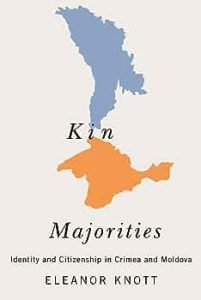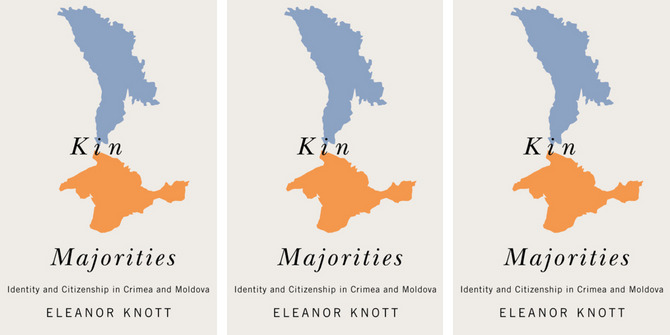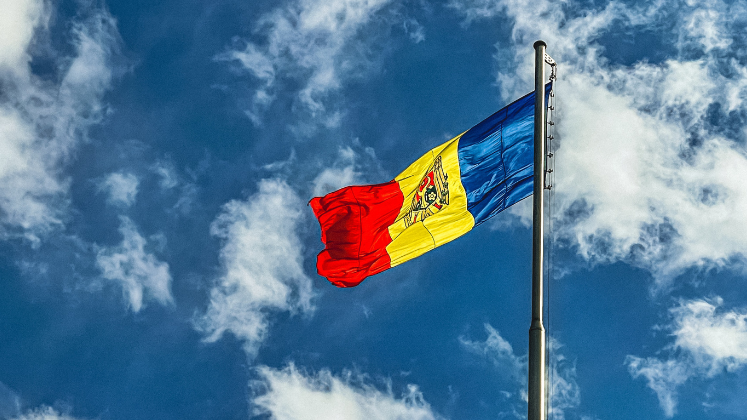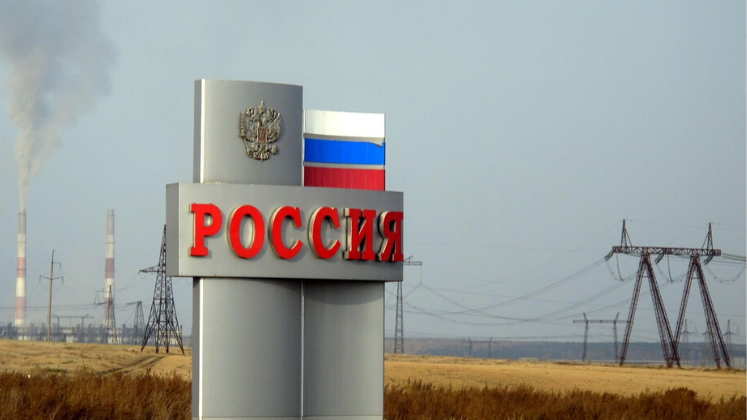In Kin Majorities: Identity and Citizenship in Crimea and Moldova, Eleanor Knott presents a comparative study of how people living in Crimea and Moldova identified with Russia and Romania, respectively, and engaged with citizenship in those countries prior to Russia’s annexation of Crimea in 2014. Focusing on an underexplored topic in the sphere of ethnopolitics, Knott offers a rich analysis of sovereignty, identity and citizenship in Eastern Europe, writes Eric Loefflad.
Kin Majorities: Identity and Citizenship in Crimea and Moldova. Eleanor Knott. McGill-Queens University Press 2022.
 The term “ethnopolitics” typically invokes majority-minority dynamics and the many questions they raise for our world-system of sovereign nation-states. As Mahmood Mamdani recently proclaimed in his capstone text Neither Settler nor Native: The Making and Unmaking of Permanent Minorities, our present configuration of modernity ensures that minority populations can never be sovereign, at best merely “tolerated”. For Mamdani, a nation’s claim to “civilised” status, based on liberal notions of progress, is largely determined by its toleration of its forever disempowered minorities. Yet, as Eleanor Knott shows in Kin Majorities: Identity and Citizenship in Crimea and Moldova, another manifestation of ethnopolitics remains largely obscured due to these majority-minority fixations.
The term “ethnopolitics” typically invokes majority-minority dynamics and the many questions they raise for our world-system of sovereign nation-states. As Mahmood Mamdani recently proclaimed in his capstone text Neither Settler nor Native: The Making and Unmaking of Permanent Minorities, our present configuration of modernity ensures that minority populations can never be sovereign, at best merely “tolerated”. For Mamdani, a nation’s claim to “civilised” status, based on liberal notions of progress, is largely determined by its toleration of its forever disempowered minorities. Yet, as Eleanor Knott shows in Kin Majorities: Identity and Citizenship in Crimea and Moldova, another manifestation of ethnopolitics remains largely obscured due to these majority-minority fixations.
Knott’s object of study is ‘kin majorities’, situations where the plight of a majority population attracts the attention of a (typically larger and more powerful) state dominated by the same majority group in the name of trans-border ethnic solidarity.
Knott’s object of study is “kin majorities”, situations where the plight of a majority population attracts the attention of a (typically larger and more powerful) state dominated by the same majority group in the name of trans-border ethnic solidarity. While there are numerous instances of kin majority dynamics, especially in the former Soviet sphere, Knott is concerned with Russian-majority Crimea and Romanian-majority Moldova, and their places as subjects of the respective kinship policies of the Russian and Romanian states. Rather than fixating on high-level geopolitical issues, Knott focuses on how kin majority politics manifest in the everyday lives of ordinary people. When presenting this study – an empirically rich endeavour comprised of 108 interviews conducted in English, Russian, and Romanian – Knott overturns many embedded misconceptions that define external consciousness of both Crimea and Moldova. In expanding the greater research agenda on ethnopolitics, while remaining attuned to contextual specifics, Kin Majorities operates through a series of connected binaries: Crimea versus Moldova, quasi-citizenship versus citizenship, and “top-down” versus “bottom-up” approaches to the study of political life.
The citizenship policies of the respective kin states to these respective regions does not seem to match these contrasting assignments of prestige in the national imagination.
Chapter 2 analyses the dynamics of identity and citizenship in the distinct context of kin majority situations and presents a typology of kin state citizenship as ‘nesting’, ‘cross-cutting’, ‘separate’, or ‘competing’. Knott then identifies Crimea and Moldova as a high-potential comparative case-study in Chapter 3. Here she notes a defining difference in the perception of the two regions by their respective kin states. Crimea holds a special place in Russia’s imagination of its historical triumphs, with its 1954 transfer from Soviet Russia to Soviet Ukraine by Premier Nikita Khruschev often viewed as profoundly illegitimate. By contrast, Moldova, once part of “Greater Romania” and annexed in 1940 by the Soviet Union, is frequently cast in Romania as a cultural backwater. Interestingly, the citizenship policies of the respective kin states to these respective regions does not seem to match these contrasting assignments of prestige in the national imagination. Prior to its 2014 annexation by Russia, while Crimea was a subject of Russia’s “Compatriot Policy,” a scheme of “quasi-citizenship” supporting limited rights of residency in Russia for education and work offered to ethnic Russians outside Russia’s former Soviet borders, this policy afforded no additional privileges to Crimeans. Conversely, Romania has promoted Moldovan acquisition of Romanian passports to the extent that its own processing capacity is stretched to the brink.
Chapter 4 turns to Crimea and notes how this research took place prior to the 2014 annexation and, today, performing similar fieldwork would be impossible due to the risks it would present to those involved. This makes the insights Knott has gathered profoundly invaluable. Here, Kin Majorities identifies five categories of local interview participants based on their ethnicities as Russian or Ukrainian and their views on, and relationship, to Russia, Ukraine and Crimea. A particular focus for Knott is the way in which identification varied and diverged with generations in a manner that challenges much of the literature on ethnopolitics that views ethnicity as generationally fortified and entrenched.
Kin Majorities is critical of Western mischaracterisations, especially charges that Russia was engaging in a “mass passportisation” of Crimea’s residents.
Chapter 5 explores their perceptions and engagements with Russia’s kin state policies. Interestingly, across all categories there was very little desire to participate in the Compatriot Policy where work transfers to remote and climatically harsh regions of Russia held little appeal for those accustomed to Crimea. Amongst those who supported the Russian state (and believed Russia was not doing enough to challenge Ukraine’s ban on dual citizenship), Compatriot participation was disavowed in great part due to their belief that migration would dilute Crimea’s Russian composition. Even amongst other Crimeans who identified as Russian, externally backed “Politicised Russians” were dismissed as “Professional Russians” who represented abstract identity-based causes far removed from more pressing concerns of everyday life including corruption and poor socio-economic conditions. According to Knott, these realities reveal the deeper complexities behind the official 97 percent vote in favour of Crimean independence-cum-Russian unification in the wake of Russia’s invasion – a statistic frequently touted by Vladimir Putin as evidence of an overwhelming Crimean desire to join Russia. As Knott shows, much of the reason for voting in favour of the referendum was less a matter of nationalist fervour and more a matter of how “[a]fter annexation, Crimea’s residents faced a stark choice…to become Russian citizens automatically and retain property rights, or register as a foreigner within three months and obtain a residence permit (108).” However, Kin Majorities is also critical of Western mischaracterisations, especially charges that Russia was engaging in a “mass passportisation” of Crimea’s residents.
Moving to the Moldovan case –study, Chapter 6, divides the Moldovan participant categories based on their identification with Moldova or Romania, respectively. Regarding the politics of Romanian citizenship amongst these groups there is a distinct interplay of overlap and divergences between the symbolic and material value of said citizenship. Those who identified as predominantly “Romanian” were prone to deeming Romanian citizenship a just restoration of that which was lost through Soviet annexation. Those who identified as predominately “Moldovans” were more cynical in viewing Romanian citizenship as primarily a means of escaping Moldova’s instability, uncertainty, and lack of opportunity relative to Romania (features acknowledged themselves by those focused on symbolic value). As was the case in Crimea, desire for Romanian citizenship amongst participants in Moldova varies according to a generational divide along a distinct Soviet/post-Soviet axis. Consequentially, hopeful applicants for Romanian citizenship would often have to rely upon family members with very different views on identity for access to the documents required by citizenship applications.
Romanian accession to the EU constrained free movement between Romania and Moldova, and citizenship emerged as an attractive alternative to a burdensome visa process.
While Romanian accession to the EU constrained free movement between Romania and Moldova, and citizenship emerged as an attractive alternative to a burdensome visa process, “[e]ven since Moldovans gained visa-free access to the EU in 2014, the appetite for Romanian citizenship, and acceptance of its requisition; has not waned (191).” Notably, Romanian citizenship for individuals has been characterised in radically different terms concerning its aggregate effects on Moldova. For those who identified with the symbolic force of citizenship, the work and educational opportunities provided by Romanian citizenship policies would likely translate into Moldovans bringing the benefits of skills acquired abroad back to Moldova. However, for the others, this same myriad of opportunity was contributing to Moldova’s brain drain as well as a decadent attitude amongst the Moldovan elite whose acquisition of Romanian citizenship signalled their non-commitment to Moldova.
Overall, Kin Majorities shows the importance of a ‘bottom-up’ approach to studies of politics that are all too often dominated by ‘top-down” logics. By showcasing the vast internal diversity of identity and perspective within majority populations Kin Majorities debunks “top-down’” framings of majority-minority dynamics that, however implicitly, cast groups as monoliths. While Knott depicts sovereign status, a foundational matter of international law and politics, as a “top-down” issue exceeding Kin Majorities’ “bottom-up” approach, there remains a universe of questions of how grand abstractions of sovereignty, a notoriously malleable concept, shape everyday life.
There remains a universe of questions of how grand abstractions of sovereignty, a notoriously malleable concept, shape everyday life.
There is perhaps no greater illustration of this variable sovereign status issue then the annexation of Crimea. Whatever the commonality of ends, the referendum on Crimea’s independence and subsequent unification with Russia gave this event an entirely different character and texture than if the title to this contested peninsula was simply demanded from one sovereign state by another. Who was this for? By presenting a framework through which this multi-faceted question can be meaningfully assessed, Kin Majorities has many insights to offer international lawyers, international relations scholars, and political theorists in addition to experts on Russian politics, Romanian politics, post-Soviet affairs, and comparative ethnic conflict.
Note: This review gives the views of the author, and not the position of the LSE Review of Books blog, or of the London School of Economics and Political Science. The LSE RB blog may receive a small commission if you choose to make a purchase through the above Amazon affiliate link. This is entirely independent of the coverage of the book on LSE Review of Books.
Main Image: anfisa focusova on Shutterstock.
Read an interview with author Eleanor Knott about Kin Majorites conducted by LSE Review of Books in 2022 here and an article by her, “Were Crimeans really pro-Russian before annexation?” for LSE Research for the World here.







